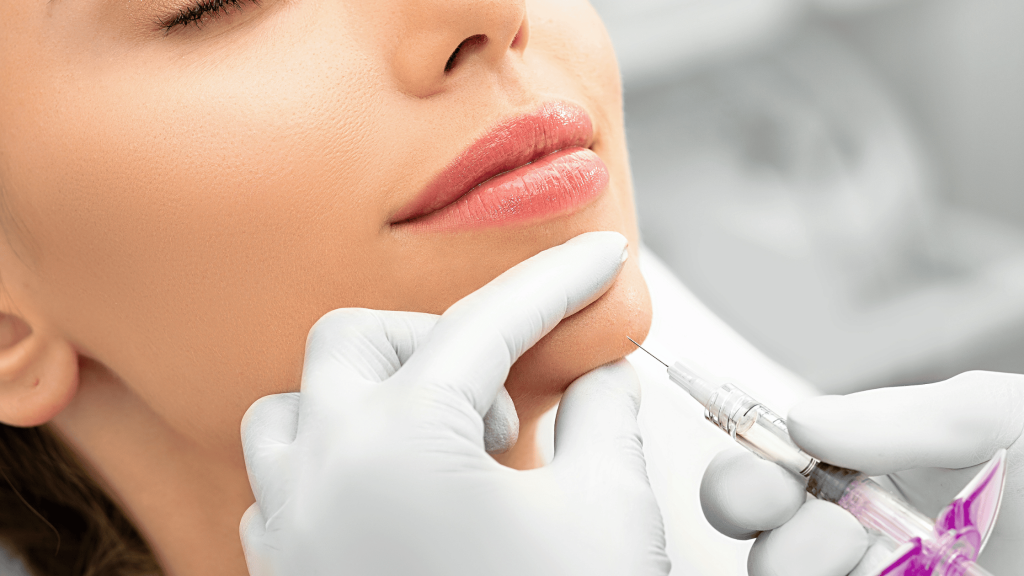
Are you considering dermal fillers to regain that youthful, vibrant appearance? Have you ever thought about the possibility of your body rejecting these treatments? You’re not the only one! Numerous individuals across the UK share your concerns, and you’ve landed in the perfect place to learn more. In this mind-blowing blog post, we’ll uncover the astonishing truth about whether your body can reject dermal fillers. Keep reading to discover the shocking facts!
Dermal Fillers Demystified
Dermal fillers, often referred to as facial fillers, are injectable substances utilised to volumise the skin, minimise wrinkles, and enhance facial features. These minimally invasive procedures have gained immense popularity in recent years, with countless celebrities showcasing their filler-enhanced appearances. The most prevalent fillers used in the UK are hyaluronic acid-based; however, other varieties include poly-L-lactic acid, calcium hydroxylapatite, and polymethylmethacrylate.
Can Your Body Really Reject Dermal Fillers?
While dermal fillers have become a popular choice for those seeking facial rejuvenation, there are concerns about the body rejecting these treatments. Although the term “rejection” is often used, it’s not entirely accurate. In reality, what most people are worried about is an adverse reaction to the filler or an immune response. So, can your body react negatively to dermal fillers? The answer might surprise you! Keep reading to find out more.
Surprising Reasons Your Body Might React to Dermal Fillers
Infection
One possible cause for an adverse reaction to dermal fillers is infection. If bacteria are introduced during the injection process, it can lead to inflammation, swelling, and pain. In such cases, the body is not rejecting the filler, but rather responding to the infection.
Inflammatory Response
In rare cases, the body may mount an immune response to the filler, causing an inflammatory reaction. This can result in redness, swelling, and discomfort. However, this is not a true rejection of the filler; rather, it’s the body’s natural response to a foreign substance.
Incorrect Technique or Placement:
If the filler is injected too deeply, too superficially, or in the wrong location, it can lead to complications. In such cases, the body may attempt to break down and remove the filler, causing an adverse reaction.
Allergic Reaction
While uncommon, some individuals may be allergic to certain filler components. This can lead to redness, itching, and swelling. In severe cases, it may cause difficulty breathing and warrant immediate medical attention.

How to Minimise Your Risk of Adverse Reactions
Choose a Reputable Practitioner
Ensure that your practitioner is experienced, licensed, and uses high-quality, FDA-approved fillers. This reduces the likelihood of complications, including adverse reactions.
Be Honest About Your Medical History
Inform your practitioner about any allergies, medical conditions, or medications you’re taking. This information will help them select the most appropriate filler for you and minimise any risks.
Follow Aftercare Instructions
Adhering to your practitioner’s aftercare instructions can help reduce the risk of complications, including infection and inflammation.
What to Do If You Experience an Adverse Reaction to Dermal Fillers
If you suspect that you’re experiencing an adverse reaction to a dermal filler, don’t panic! Contact your practitioner immediately and describe your symptoms. They will assess your situation and advise on the appropriate next steps. In some cases, they may recommend over-the-counter anti -inflammatory medications or antihistamines to alleviate your symptoms. In more severe cases, they may need to dissolve the filler using an enzyme called hyaluronidase.
Remember, your safety and well-being should always be your top priority. If you experience any severe symptoms, such as difficulty breathing or extreme swelling, seek emergency medical attention right away.
Conclusion:
Now that we’ve unveiled the astonishing truth about whether your body can reject dermal fillers, you can make a more informed decision about pursuing this cosmetic treatment. While adverse reactions are rare, it’s crucial to be aware of the risks and take the necessary precautions.
To recap, if you’re considering dermal fillers, choose a reputable practitioner, be honest about your medical history, and follow aftercare instructions diligently. And if you ever suspect an adverse reaction, don’t hesitate to contact your practitioner or seek medical help.